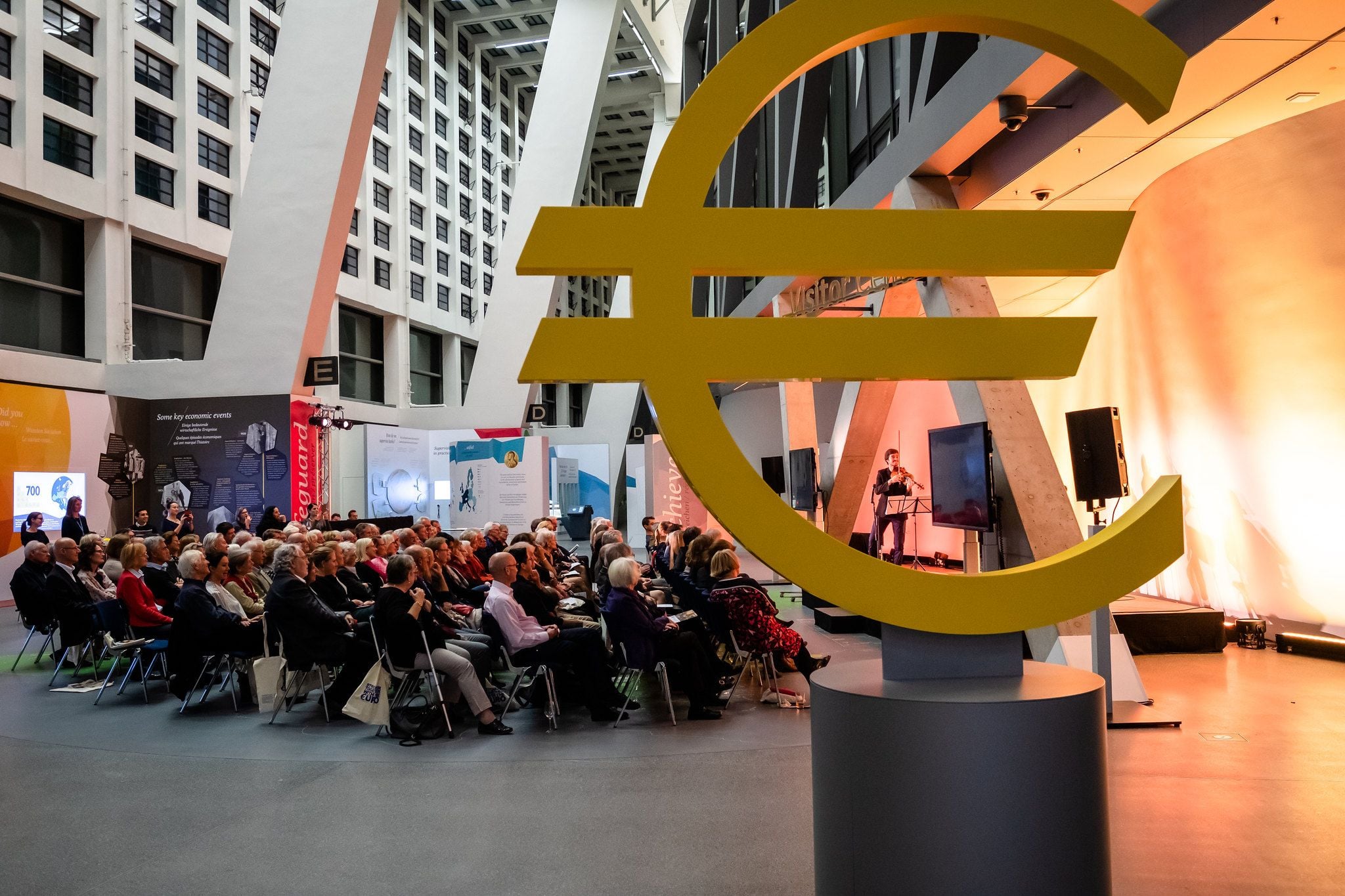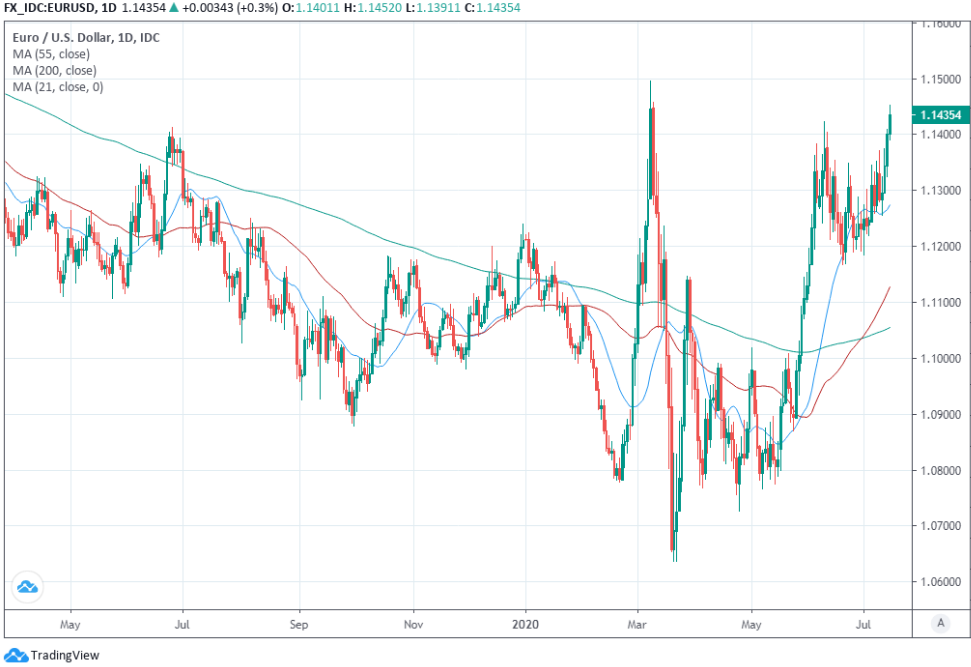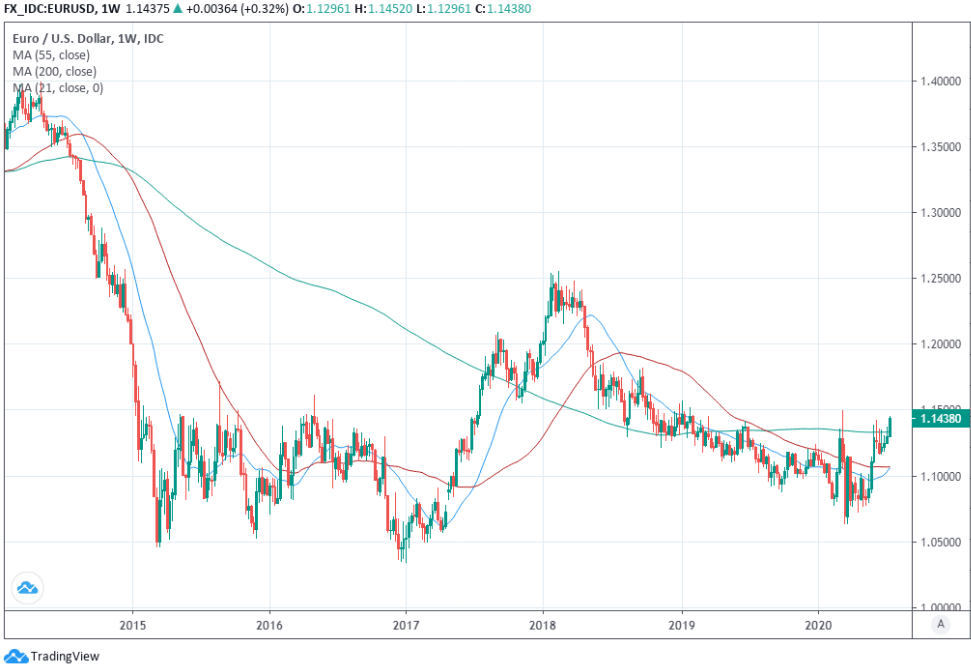Euro-Dollar Rate Crosses 1.14, Draws Another Buyer as Greenback's Woes Set to Mount Further
- Written by: James Skinner

Image © European Central Bank
Achieve up to 3-5% more currency for your money transfers. Beat your bank's rate by using a specialist FX provider: find out how.
The Euro was advancing on a weakening Dollar Wednesday and was drawing new interest from analysts as the greenback's troubles look set to endure for a while yet, providing the Euro-to-Dollar rate with a window for continued gains in spite of uncertainty about the EU's coronavirus recovery fund.
Europe's single currency reclaimed the long lost 1.14 handle on Wednesday and was trading at what would be its highest level for more than a year if two days during the liquidity crisis of March are set to one side. Euro gains were mostly the result of Dollar pains as the single currency actually softened against most of its other major rivals including Pound Sterling.
The Dollar was sold while risk currencies and stock markets were bought after after Moderna said late Tuesday that its experimental coronavirus vaccine had "induced rapid and strong immune responses" in 45 patients while noting that it "remains on track to be able to deliver approximately 500 million doses per year, and possibly up to 1 billion doses per year, beginning in 2021."
This and Wednesday's move above 1.14 have galvanised once-bearish voices into betting on a more protracted rally in the Euro-to-Dollar rate, with 1.20 seen as a possibility. Price action comes ahead of an important European Council meeting as well as the July European Central Bank (ECB) decision which could both impact the Euro, though the darkening outlook for the Dollar could be a greater influence going forward.
"1.1400 resistance is more or less gone. We would stay long of the pair with a stop under 1.1200, add to the position on a firm break of the March highs (1.1495), and look to hold the position until 1.2000 prints (or until the current dynamic flips). But we're closing our eyes as we do this, because a long EURUSD position is akin to taking a view on relative growth & fiscal policy dynamism between the two jurisdictions in question," says Stephen Gallo, European head of FX strategy at BMO Capital Markets.

Above: Euro-to-Dollar rate shown at daily intervals with 21, 55 and 200-day moving-averages.
Dollar weakness was prompted in late May by an ebb of safe-haven demand though it's being aided and abetted by the comparatively worse damage done to the U.S. economy by the coronavirus in the first-quarter, not to mention a second wave of infections that's stoked fears for the recovery.
U.S. GDP fell by -5% in the first quarter while in the Eurozone it was down only -3.8%, despite the virus having shuttered economies in Europe before it did in North America. This is a boon for a Euro-to-Dollar exchange rate that's often guided by differences in expected levels of growth on each side of the Atlantic.
U.S. economic underperformance provides the Euro-to-Dollar rate with a window for a rally that could be something like that seen in 2017 because it will be November and after the outcome of the 2020 presidential election is known before it becomes clear what happened to both economies in the third quarter.
As a result the election will have passed before investors know which of the two economies rebounded quicker out of the coronavirus trough and by that stage, a new multi-year Dollar outlook will have been written in stone already given the implications the ballot could have for the growth outlook.
"Commentators have highlighted the latest headlines on COVID-19 vaccination progress as a reason for risk-on inspired USD weakness. While that certainly has not harmed the aforementioned dynamic in FX and equity markets, the magnitude of the moves we're seeing are still small in the grand scheme of things. What matters more is that FX markets are starting to more actively trade the Fed's balance sheet, USD liquidity and US fiscal policy," Gallo says.

Above: Euro-to-Dollar rate shown at weekly intervals with 21, 55 and 200-week moving-averages.
"Increased solidarity is likely to shift higher the centre of gravity for EUR crosses. The improvement in the tone of the EUR has already been very evident in EUR/CHF where May’s 5 year low around the 1.05 level currently appears to be a distance memory. In response to the changes in EUR fundamentals we revised higher our forecasts for EUR/USD in the spring expecting to see EUR/USD fluctuating around the 1.13 level on a 1 and 3 month view," says Jane Foley, a senior FX strategist at Rabobank. "Beyond that we saw risk of another dip below 1.10. The rationale behind that view is the assumption that risk appetite will dip again on the back of another wave of covid-19 or on associated weak economic and corporate news. Although risk appetite has been lifted today by hopes of a vaccine, we continue to see the prospect of downward adjustment in the overall performance of risky assets in the months ahead as the reality of high unemployment levels and reduced demand sets in."
It remains to be seen if Europe's single currency can sustain its advance on the Dollar once the second and third quarter growth pictures become known, though an eventual approval of the eagerly-awaited coronavirus recovery fund could help. The Euro might also receive a helping hand in November if opinion polls have been right about the likely outcome of the U.S. presidential election.
There weren't many polls that could have gotten 2016 more wrong if the somewhat typical pre-polling day narrowing of the favourite's lead, to within the margin of error, is put to one side. But this time too all polls show the Democratic Party candidate, Joe Biden apparently, in the lead ahead of November's vote.
The election outcome matters for the Euro because of the impact it could have on U.S. growth and demand for the Dollar. President Donald Trump's 2018 tax cuts bought two years of economic outperformance and a lower Euro-to-Dollar rate heading into the pandemic, whereas a Democratic Party victory in November 2020 would see higher taxes and, at least according to conventional economic thinking, slower growth and a weaker Dollar.
"It was only in October last year that plans for a eurozone budget had been negotiated down to a meagre €17 billion fund for competitiveness and convergence as part of the multiannual budget 2021-2027. This weekend, there is a fighting chance that an agreement will be reached on an EU recovery fund that holds many multiples of that," says Bert Colijn, a senior economist at ING. "This weekend, a political agreement on the basic principles of a European Recovery Fund is still feasible, although the final stamp of approval may need another round of negotiating as it will involve lots of horse-trading, including the negotiations on the European budget. A deal now would be huge, but any sign of further progress on the remaining contested issues would also still be positive."




